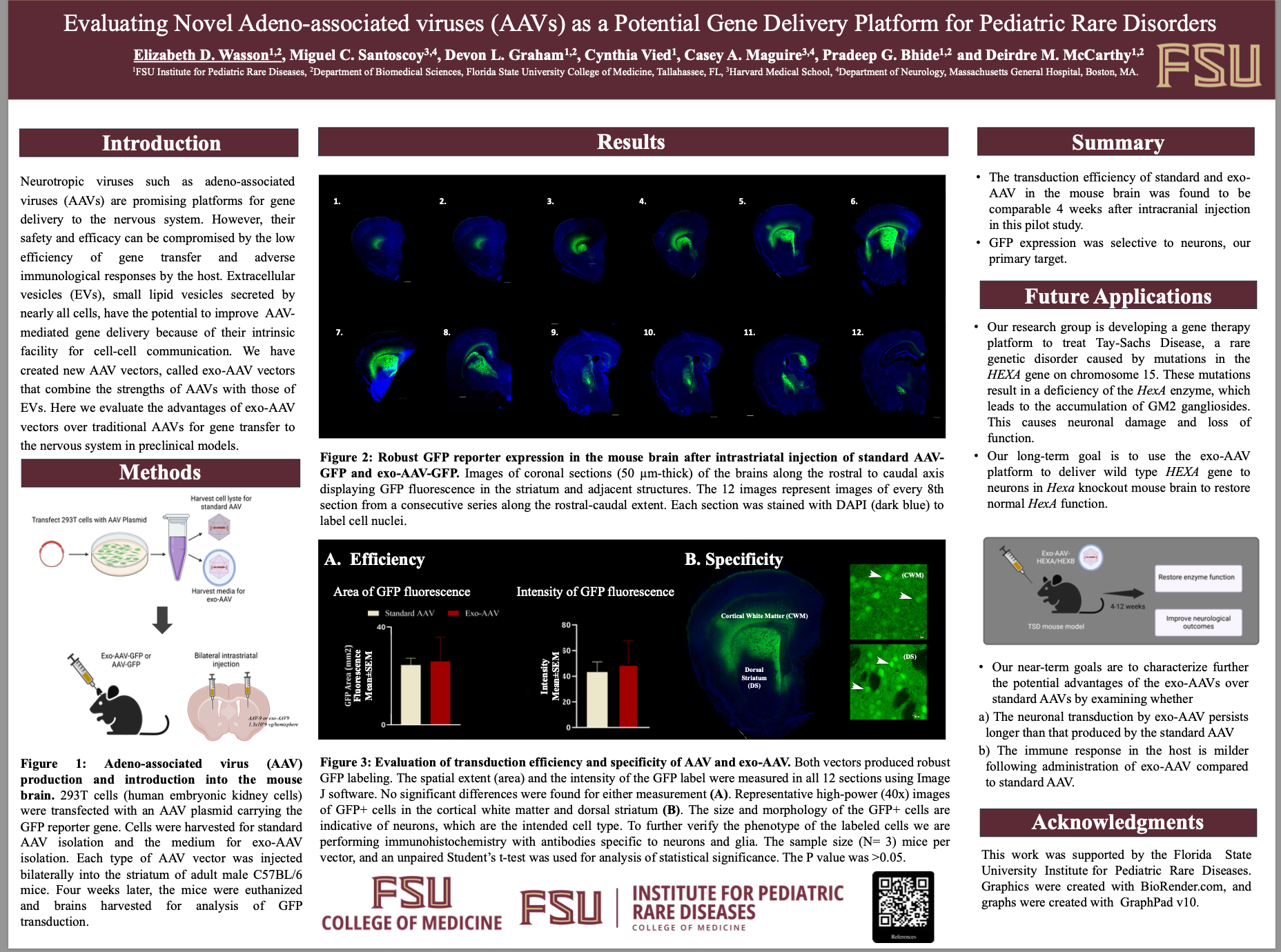Research Symposium
25th annual Undergraduate Research Symposium, April 1, 2025
Elizabeth Wasson Poster Session 4: 3:00 pm - 4:00 pm / Poster #231

BIO
Elizabeth Wasson is a senior at Florida State University pursuing a B.A. in General Music with a minor in Chemistry. She plays the French horn and has performed with the University Concert Band for three semesters. In addition to her musical studies, she works as a laboratory assistant in the Bhide Biomedical Research Lab at the FSU College of Medicine. Her research focuses on developing novel gene therapy treatments for neurological disorders, such as Tay-Sachs disease, through the Institute for Pediatric Rare Disease (IPRD). Elizabeth is also a member of two honor societies, Order of Omega representing the top three percent of Greek leaders at FSU, and Garnet and Gold Key FSU's oldest and most prestigious leadership honorary. Elizabeth is passionate about the intersection of science and medicine and plans to apply her research experience toward a future career in healthcare.
Evaluating Novel Adeno-associated viruses (AAVs) as a Potential Gene Delivery Platform for Pediatric Rare Disorders
Authors: Elizabeth Wasson, Deirdre McCarthyStudent Major: BA in General Music
Mentor: Deirdre McCarthy
Mentor's Department: Biomedical Research Mentor's College: College of Medicine Co-Presenters:
Abstract
Neurotropic viruses such as adeno-associated viruses (AAVs) are promising platforms for gene delivery to the nervous system. However, their safety and efficacy can be compromised by low efficiency of gene transfer and adverse immunological responses by the host. Extracellular vesicles (EVs), small lipid vesicles secreted by nearly all cells, have the potential to improve AAV-mediated gene delivery because of their intrinsic facility for cell-cell communication. We have created new AAV vectors, called exo-AAV vectors that combine the strengths of AAVs with those of EVs. Here we evaluate the advantages of exo-AAV vectors over traditional AAVs for gene transfer to the nervous system in preclinical . The transduction efficiency of standard and exo-AAV in the mouse brain was found to be comparable 4 weeks after intracranial injection in this pilot study. GFP expression was selective to neurons, our primary target. Future applications will include developing a gene therapy platform for treating Tay-Sachs Disease, a rare genetic disorder.
Keywords: Gene Therapy, Rare Pediatric Disorders


